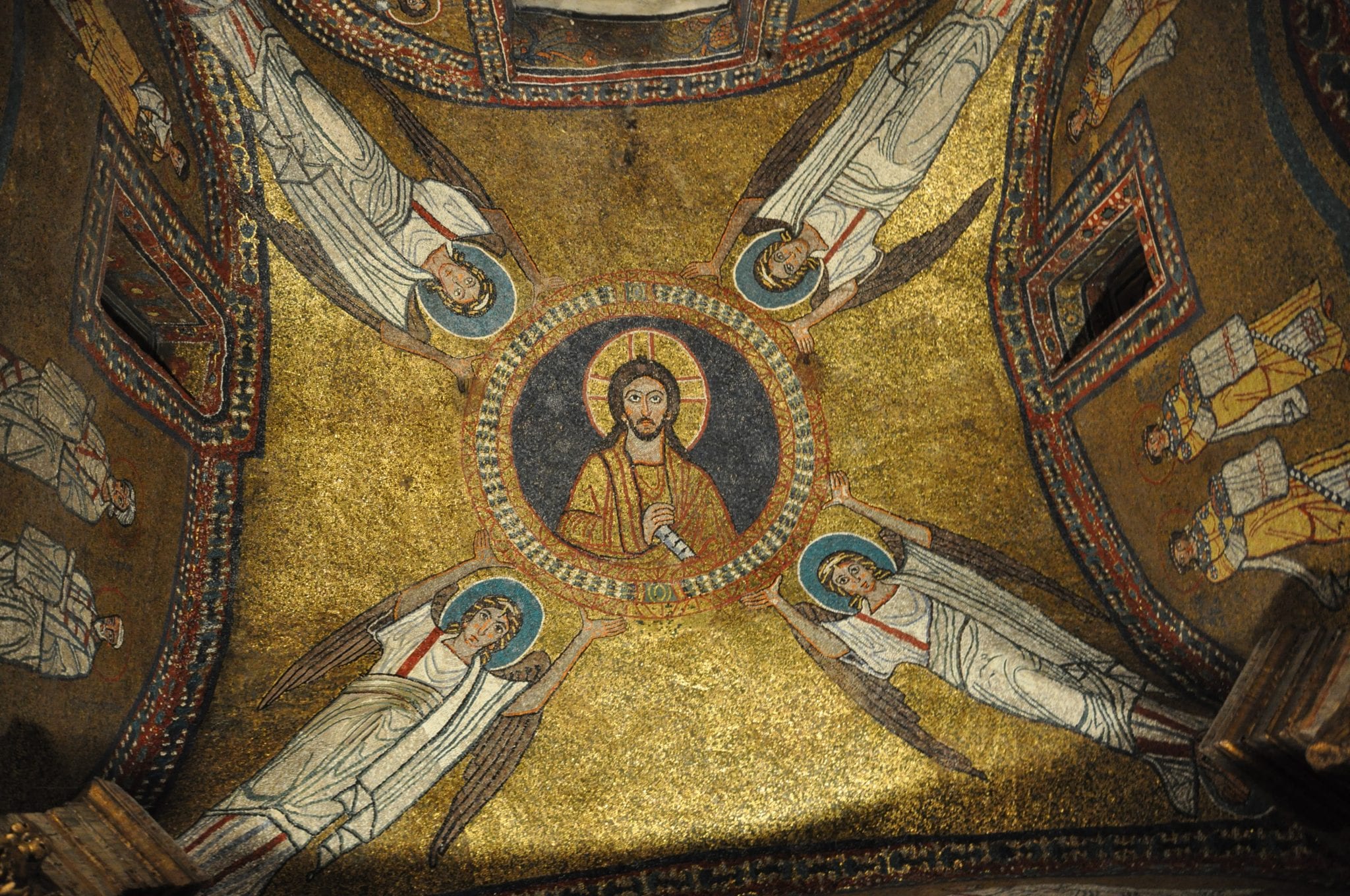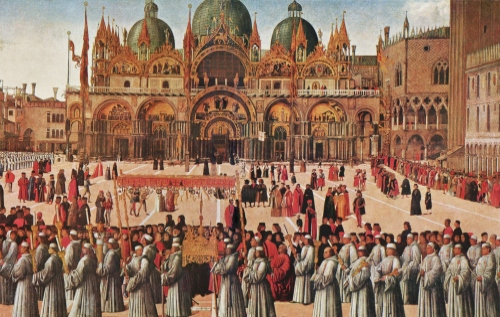Italy: A Tapestry of History, Culture, and Beauty
 Italy, a country that seamlessly weaves together the threads of history, culture, and natural beauty, stands as a testament to the enduring allure of the human spirit. From the ancient ruins of Rome to the Renaissance masterpieces of Florence, and the enchanting canals of Venice to the sun-kissed shores of the Amalfi Coast, Italy beckons travelers to embark on a journey through its rich tapestry of wonders.
Italy, a country that seamlessly weaves together the threads of history, culture, and natural beauty, stands as a testament to the enduring allure of the human spirit. From the ancient ruins of Rome to the Renaissance masterpieces of Florence, and the enchanting canals of Venice to the sun-kissed shores of the Amalfi Coast, Italy beckons travelers to embark on a journey through its rich tapestry of wonders.
A Historical Tapestry: Italy's history is as diverse and captivating as its landscape. It is a land that has witnessed the rise and fall of empires, the birth of great thinkers and artists, and the flourishing of unparalleled achievements in architecture, literature, and science.
Italy's history is as diverse and captivating as its landscape. It is a land that has witnessed the rise and fall of empires, the birth of great thinkers and artists, and the flourishing of unparalleled achievements in architecture, literature, and science.
At the heart of Italy's historical narrative lies Rome, once the epicenter of the mighty Roman Empire. The remnants of this ancient civilization still stand tall, inviting visitors to explore iconic landmarks such as the Colosseum, the Roman Forum, and the Pantheon. These architectural marvels serve as tangible reminders of Rome's glorious past and its enduring influence on Western civilization.
As centuries passed, Italy became a beacon of enlightenment during the Renaissance period. Cities like Florence, with its wealth of artistic treasures and intellectual fervor, became the cradle of the Renaissance movement. Visionary figures like Leonardo da Vinci, Michelangelo, and Botticelli left an indelible mark on the world with their revolutionary works of art, embodying the spirit of humanism and innovation that defined the era.
Cultural Mosaic: Italy's cultural landscape is as diverse as its regional cuisines. Each city and region boasts its own unique traditions, dialects, and culinary delights, contributing to the country's vibrant tapestry of culture.
Italy's cultural landscape is as diverse as its regional cuisines. Each city and region boasts its own unique traditions, dialects, and culinary delights, contributing to the country's vibrant tapestry of culture.
In Venice, the enchanting maze of canals and historic palaces provides a picturesque backdrop for the annual Carnival celebration, a spectacle of elaborate masks, vibrant costumes, and lively festivities. Meanwhile, in Sicily, the fusion of Arab, Greek, and Norman influences gives rise to a distinctive cultural identity, reflected in its architecture, cuisine, and traditions.
Italian cuisine is revered worldwide for its simplicity, freshness, and bold flavors. From the savory delights of Neapolitan pizza to the delicate pastas of Emilia-Romagna and the aromatic wines of Tuscany, Italian gastronomy is a celebration of regional ingredients and time-honored culinary techniques.
Natural Splendor: Beyond its cities and cultural landmarks, Italy's natural beauty is equally captivating. From the snow-capped peaks of the Dolomites to the sun-drenched beaches of Sardinia, Italy offers a diverse array of landscapes that beckon outdoor enthusiasts and nature lovers alike.
Beyond its cities and cultural landmarks, Italy's natural beauty is equally captivating. From the snow-capped peaks of the Dolomites to the sun-drenched beaches of Sardinia, Italy offers a diverse array of landscapes that beckon outdoor enthusiasts and nature lovers alike.
The Amalfi Coast, with its dramatic cliffs, picturesque villages, and azure waters, is a UNESCO World Heritage site that epitomizes the allure of the Italian coastline. Visitors can explore charming towns like Positano and Ravello, savoring the breathtaking views and indulging in the region's renowned seafood dishes.
In Tuscany, the rolling hills and vineyards provide a serene escape into the heart of the Italian countryside. Visitors can wander through medieval hilltop towns, sample world-class wines, and immerse themselves in the timeless beauty of the Tuscan landscape.
Preserving the Tapestry: As Italy continues to evolve in the modern era, preserving its rich tapestry of history, culture, and natural beauty remains paramount. Efforts to safeguard historic sites, promote sustainable tourism, and preserve traditional crafts help ensure that future generations can continue to marvel at Italy's timeless treasures.
As Italy continues to evolve in the modern era, preserving its rich tapestry of history, culture, and natural beauty remains paramount. Efforts to safeguard historic sites, promote sustainable tourism, and preserve traditional crafts help ensure that future generations can continue to marvel at Italy's timeless treasures.
Italy's allure lies in its ability to seamlessly blend the past with the present, the traditional with the contemporary, creating a tapestry of unparalleled beauty and richness. Whether exploring ancient ruins, savoring regional delicacies, or simply basking in the splendor of its landscapes, Italy offers a journey of discovery that captivates the soul and leaves an indelible mark on the heart.
Cultural Renaissance: In addition to its historical legacy, Italy continues to be a hub of creativity and innovation in the arts, fashion, and design. Cities like Milan, often regarded as the fashion capital of the world, host prestigious fashion weeks that showcase the latest trends from renowned designers and emerging talents alike. The city's sleek architecture and avant-garde spirit serve as a testament to Italy's ongoing commitment to pushing boundaries and shaping global culture.
In addition to its historical legacy, Italy continues to be a hub of creativity and innovation in the arts, fashion, and design. Cities like Milan, often regarded as the fashion capital of the world, host prestigious fashion weeks that showcase the latest trends from renowned designers and emerging talents alike. The city's sleek architecture and avant-garde spirit serve as a testament to Italy's ongoing commitment to pushing boundaries and shaping global culture.
Furthermore, Italy's contribution to the world of opera and classical music is immeasurable. The iconic La Scala opera house in Milan and the grandeur of Teatro di San Carlo in Naples are just a few of the venues where audiences can experience the magic of timeless masterpieces performed by world-class musicians and singers.
Spiritual Reflection: Italy's spiritual heritage is deeply rooted in its landscape, with sacred sites and pilgrimage routes drawing visitors from around the world seeking solace, inspiration, and enlightenment. The Vatican City, home to St. Peter's Basilica and the Sistine Chapel, stands as the spiritual epicenter of Roman Catholicism, attracting millions of pilgrims and art enthusiasts each year.
Italy's spiritual heritage is deeply rooted in its landscape, with sacred sites and pilgrimage routes drawing visitors from around the world seeking solace, inspiration, and enlightenment. The Vatican City, home to St. Peter's Basilica and the Sistine Chapel, stands as the spiritual epicenter of Roman Catholicism, attracting millions of pilgrims and art enthusiasts each year.
Meanwhile, the serene beauty of Assisi, birthplace of St. Francis, offers a glimpse into the life of one of Christianity's most revered saints. Visitors can explore the Basilica of St. Francis and the surrounding countryside, experiencing a sense of tranquility and spiritual renewal amidst the rolling hills of Umbria.
Challenges and Opportunities:
Despite its many treasures, Italy faces challenges in the modern world, including economic uncertainty, environmental concerns, and the impact of mass tourism on its fragile ecosystems and cultural heritage. However, these challenges also present opportunities for innovation, collaboration, and sustainable development that can ensure Italy's legacy endures for generations to come.
By embracing responsible tourism practices, investing in renewable energy, and supporting local artisans and businesses, Italy can preserve its natural and cultural heritage while fostering economic growth and social resilience.
Sustainable Preservation: To ensure the longevity of Italy's cultural and natural heritage, sustainable preservation efforts are crucial. Collaborative initiatives between government agencies, local communities, and environmental organizations can help mitigate the impacts of climate change, pollution, and over-tourism on Italy's delicate ecosystems and historic landmarks.
To ensure the longevity of Italy's cultural and natural heritage, sustainable preservation efforts are crucial. Collaborative initiatives between government agencies, local communities, and environmental organizations can help mitigate the impacts of climate change, pollution, and over-tourism on Italy's delicate ecosystems and historic landmarks.
Implementing measures such as carbon footprint reduction, waste management strategies, and eco-friendly transportation options can contribute to the conservation of Italy's natural resources while enhancing the visitor experience. Additionally, promoting responsible travel practices, such as respecting local customs and traditions, supporting ethical tourism operators, and minimizing single-use plastics, can help preserve Italy's unique cultural identity and foster mutual respect between residents and visitors.
Cultural Revitalization: Italy's cultural heritage is not static but rather a living, breathing entity that evolves over time. Supporting initiatives that promote cultural revitalization, such as community-based arts programs, heritage preservation workshops, and indigenous language revitalization efforts, can empower local communities to reclaim and celebrate their cultural heritage.
Italy's cultural heritage is not static but rather a living, breathing entity that evolves over time. Supporting initiatives that promote cultural revitalization, such as community-based arts programs, heritage preservation workshops, and indigenous language revitalization efforts, can empower local communities to reclaim and celebrate their cultural heritage.
Furthermore, investing in the restoration and adaptive reuse of historic buildings and monuments can breathe new life into neglected urban areas, creating vibrant spaces for cultural exchange and economic revitalization. By embracing innovation while honoring tradition, Italy can ensure that its cultural legacy remains vibrant and relevant in the modern world.
Global Collaboration: Italy's cultural and natural treasures belong not only to its citizens but to all humanity. International collaboration and cooperation are essential for safeguarding these priceless assets for future generations. Through partnerships with UNESCO, the European Union, and other global stakeholders, Italy can leverage resources and expertise to address common challenges such as climate change, sustainable development, and cultural heritage preservation.
Italy's cultural and natural treasures belong not only to its citizens but to all humanity. International collaboration and cooperation are essential for safeguarding these priceless assets for future generations. Through partnerships with UNESCO, the European Union, and other global stakeholders, Italy can leverage resources and expertise to address common challenges such as climate change, sustainable development, and cultural heritage preservation.
By sharing best practices, exchanging knowledge, and fostering dialogue across borders, Italy can contribute to a more inclusive and sustainable future for all. Through the power of collaboration, Italy's tapestry of history, culture, and beauty can continue to inspire and enchant generations to come.
Conclusion:
Italy's tapestry of history, culture, and beauty is a testament to the resilience and creativity of its people. From the ancient wonders of Rome to the contemporary allure of Milan, Italy offers a journey of discovery that transcends time and captivates the imagination.
As travelers wander through its cobblestone streets, savoring the flavors of its cuisine, marveling at its artistic treasures, and communing with its natural splendor, they become part of the rich tapestry that is Italy—a tapestry woven with the threads of history, culture, and beauty, and bound together by the enduring spirit of la dolce vita.










































